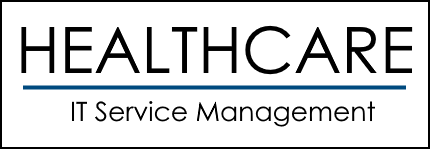Table of Contents
ToggleKey performance indicators allow healthcare business owners to measure metrics correctly, assess their IT departments, and improve patient care and organizational success. An IT department in any industry is crucial for ensuring things are done efficiently and correctly, and in healthcare, a good IT department can spell the difference between providing quality care or lagging behind the competition.
However, it’s not always easy to tell if an IT department is performing correctly. There are specific metrics to measure, as well as ways to measure them, that can inform you regarding how well your IT department is doing and what aspects of the department can be improved for maximum efficiency and quality.
Healthcare is a very important, broad field that is full of people playing essential roles in patient care. They may be keeping patients healthy, keeping the lights on in the clinic, or generally ensuring everything is running smoothly. One vital but often overlooked job in the healthcare field is the IT department.
Help Desk Metrics
The modern healthcare industry, like many modern industries, relies on the use of computers to keep track of information, share and discover relevant news, and stay connected to the wider industry and world. As a result, if there’s a computer problem, it can spell disaster for the employees, who aren’t expected to have extensive computer knowledge to fix the problem.
That’s where the IT help desk comes in. A help desk’s job is to respond to problems in a timely manner so that operations and patient care can resume. Failure to do this can result in prolonged issues, which can make it harder for the healthcare facility to properly retrieve or collect information.
To assess whether or not your help desk is performing properly, you should be checking to make sure your IT department is consistently getting high scores when it comes to these metrics:
Response Time
How quickly was the issue addressed? Was it fast enough to avoid any serious problems, or did the wait cause other things to be delayed? An IT department is expected to be able to handle help desk requests at an efficient pace, both to ensure problems are handled quickly and to prevent extra stress and productivity loss.
First Call Resolution
This is a term to describe when a help desk representative is able to solve a problem on the very first attempt. Being able to do this saves time and headaches, so it’s the goal an IT department should strive for. Otherwise, not only is the problem being prolonged, but the department itself will appear less reliable in the future.
Technician Satisfaction
If everyone is satisfied with the work provided by the help desk and trusts the IT department to handle tasks efficiently when needed, then it’s a good sign that things are working properly. However, if people aren’t satisfied, there might be something wrong with the work the help desk is putting out.
Good results in these three categories imply that the help desk is meeting the standard of performance. This means that you can expect a speedy response, reliable solutions, and an overall satisfactory experience.
However, if the results are poor, then it’s more than likely that your IT department is struggling in some areas. This can impact the productivity of the entire healthcare clinic, so it’s important to solve the problem and reassess to make sure that the department is performing better.
System Availability Metrics
Being able to have access to a computer system when it’s needed is an important part of any industry, but especially for the healthcare industry, which needs to be able to access information at a moment’s notice. Long or inconvenient periods of “downtime,” which is when a computer is offline, unavailable, or generally inoperative, doesn’t just reflect poorly on the IT department’s ability to work efficiently but can make it more difficult to work with patients in a timely manner, ultimately reducing the overall productivity of the healthcare organization.
To measure whether or not your IT department is avoiding this pitfall, focus on how it fits within these metrics:
Uptime
Uptime describes how often a computer is available and operational. It’s usually expected for workers to be able to access a working computer at any time. As a result, the longer the organization can go without experiencing downtime, the more likely it is that the IT department is performing satisfactorily.
Mean Time to Resolution
This is the average amount of time it takes for downtime to be resolved by the IT department. This is important because not every computer issue can be avoided, and downtime is sometimes necessary for the IT department to be able to fix something. If they usually can get the computers up and running again in a short time, that’s a sign of consistently good work.
Time to Detect
This metric focuses on how quickly an IT department can notice that a computer system is down and figure out the problem. The faster and more accurately these problems can be spotted, the more reliable the IT department will be in a time of crisis.
An IT department that successfully keeps computers up and running for longer periods of time while maintaining the ability to react quickly when downtime happens is providing an important service to any healthcare organization.
If the IT department is struggling with one or more of these metrics, however, it’s a sign that there may be something wrong with their reaction time or ability to solve problems. In order to make sure that, in the future, your IT department is providing the best support possible so that you may have the most productive and successful healthcare facility possible, you may need the help of a healthcare-based IT specialist. Healthcare ITSM can provide training, plan-making, scheduled operational activity reports, and more, all to ensure that your system availability remains high and stable.
Security Metrics
Cyber security is a hot-button issue these days, and this is warranted. Attacks by cybercriminals are a cause of so many serious problems for individual users and massive organizations alike. Without proper cyber security, a hacker could crash systems, access and alter account information or important files, and steal personal data. For a healthcare organization, protecting your computers from cyber criminals is of the utmost importance because patient information is vital and must be kept safe and secure.
An IT department’s role in keeping the computer systems safe is vital for also keeping patients and healthcare workers safe. So, it’s important that an IT department is talented at keeping up with cyber security and will ideally be able to score highly when these metrics are assessed.
Detecting Vulnerabilities
A vulnerability can be any weakness that a cybercriminal can exploit. From easily cracked passwords to a lack of reliable anti-virus technology and unencrypted information, an IT department should be able to notice and resolve these vulnerabilities faster than a hacker could make use of them.
Patch Compliance
This metric means that the IT department is not only providing patches against emerging security threats but also that the patch is successful and applied to the entire system in a timely manner.
Security Incident Response
If the worst-case scenario happens and a cybercriminal manages to breach the security measures, the IT department needs to be able to step up and respond to the situation quickly. A data breach that isn’t handled in time will not only cause more damage but will make the IT department seem untrustworthy when it comes to protecting serious information.
In the best-case scenario, the IT department will be able to step up to keep this sensitive information safe from any and all cyber threats that the healthcare organization may be facing. Problems will be resolved before they can grow worse, and weaknesses will be discovered and patched before they can be exploited.
Of course, if your IT department is unable to successfully follow these metrics and isn’t a reliable source of protection against cyber security threats, then you likely need some help to ensure that things get better.
Project Management Metrics
One final major role played by an IT department is project management. Healthcare organizations can often be rather busy, full of employees who all have specific jobs to focus on and patients who are in need of help. As such, a team that is dedicated to handling project management tasks can make sure that the organization gets things done while also taking care of the important work other employees don’t have the time or the skill to handle.
There are various financial, time management, and organizational tasks that fall under the banner of “project management,” and an IT department should be able to handle them all.
When it comes to project management, the relevant metrics to assess include the following.
On-Time Completion Rates
The on-time completion rates of projects are a key indicator of your IT team’s success. It’s important that things get done when they’re needed, especially in the context of healthcare, where delays in progress can truly mean life or death. Your IT department should be able to ensure projects can be consistently completed in a timely manner.
Budget Adherence
Of course, it is critical for your budget that money be handled correctly and responsibly. Going over budget for anything can be problematic and dangerous, as you risk depleting funds that would have been allocated for other projects. Every penny counts when it comes to efficient healthcare services, so the ability to stay within budget is a key aspect of project management services.
Stakeholder Satisfaction
Healthcare business stakeholders can be critical components of your project management considerations. If the stakeholders aren’t satisfied with the work a healthcare organization is producing, you may risk losing funding and more. This may come down to the IT department’s project management skills and their inability to work as effectively as needed.
A company with good financial and management skills is a company that is likely to survive times of struggle and continue to grow and profit. For healthcare companies, this is combined with the need to be able to help everyone who comes through the doors, which means that the management and financial aspects need to be optimized not just to make money but to provide the necessary healthcare to all patients.
If your IT department is able to keep up with project management and fit these important metrics, it means that your healthcare organization will be better at providing services to everyone in need. However, if your IT department could stand to improve on these metrics, that doesn’t mean you need to start from scratch.
Address Key Performance Indicators
With the help of Healthcare ITSM, you can address IT finance, project management, and IT infrastructure, all of which are necessary for the smooth and efficient operation of a healthcare facility. Of course, no IT department is perfect all the time, but with proper attention, a healthcare business of any size can ensure efficient, reliable operations.
Whether you’re a large healthcare enterprise or a private clinic, you need a functional IT department. For larger businesses, that likely means providing the training, resources, and expertise needed to excel in IT, while smaller healthcare businesses may need healthcare IT consulting services. That’s where Healthcare ITSM comes in.
With the help of Healthcare ITSM, your IT department can get the help they need to address KPIs and become a more efficient and reliable part of your organization. We’ll help you identify your organization’s needs and find solutions to not only solve IT problems but also to enhance productivity and keep things running smoothly. Healthcare organizations of any size can consult with Healthcare ITSM and get the IT help you need – take a look at our healthcare managed IT services and packages and find the option that works best for you.

With over 16 years in the industry, Jameson Lee has honed his skills in IT management, project execution, and strategic planning. His ability to align technology initiatives with business goals has consistently delivered remarkable results for organizations across various sectors.
Jameson’s educational background includes an Associate of Applied Science degree in Computer Networking Systems, providing him with a solid foundation in technical concepts and best practices. Complementing his technical acumen, he has also completed coursework in Business Administration, equipping him with a well-rounded understanding of the operational aspects of running successful businesses.
Driven by a commitment to staying ahead of industry trends, Jameson actively pursues professional certifications and continuous learning opportunities. His credentials include CompTIA A+, N+, and Security+, along with MCP and MCTS certifications. This dedication ensures that he remains at the forefront of technological advancements, enabling him to offer innovative solutions to complex challenges.
What sets Jameson apart is his personable approach to working with clients. He believes in fostering strong relationships and effective communication, collaborating closely with stakeholders to understand their unique needs, and provide tailored technology solutions. By building trust and understanding, Jameson ensures that every project is aligned with the client’s vision and objectives.
Throughout his career, Jameson has successfully led teams and implemented robust frameworks to optimize performance and achieve remarkable technological initiatives. Whether it’s streamlining operations, enhancing cybersecurity measures, or implementing cutting-edge software solutions, Jameson has consistently delivered tangible outcomes for his clients.
As a trusted IT partner, Jameson’s mission is to empower businesses with technology solutions that drive growth, efficiency, and competitive advantage. With his expertise, dedication, and personable approach, Jameson Lee is the catalyst for transforming your business through the power of technology.






